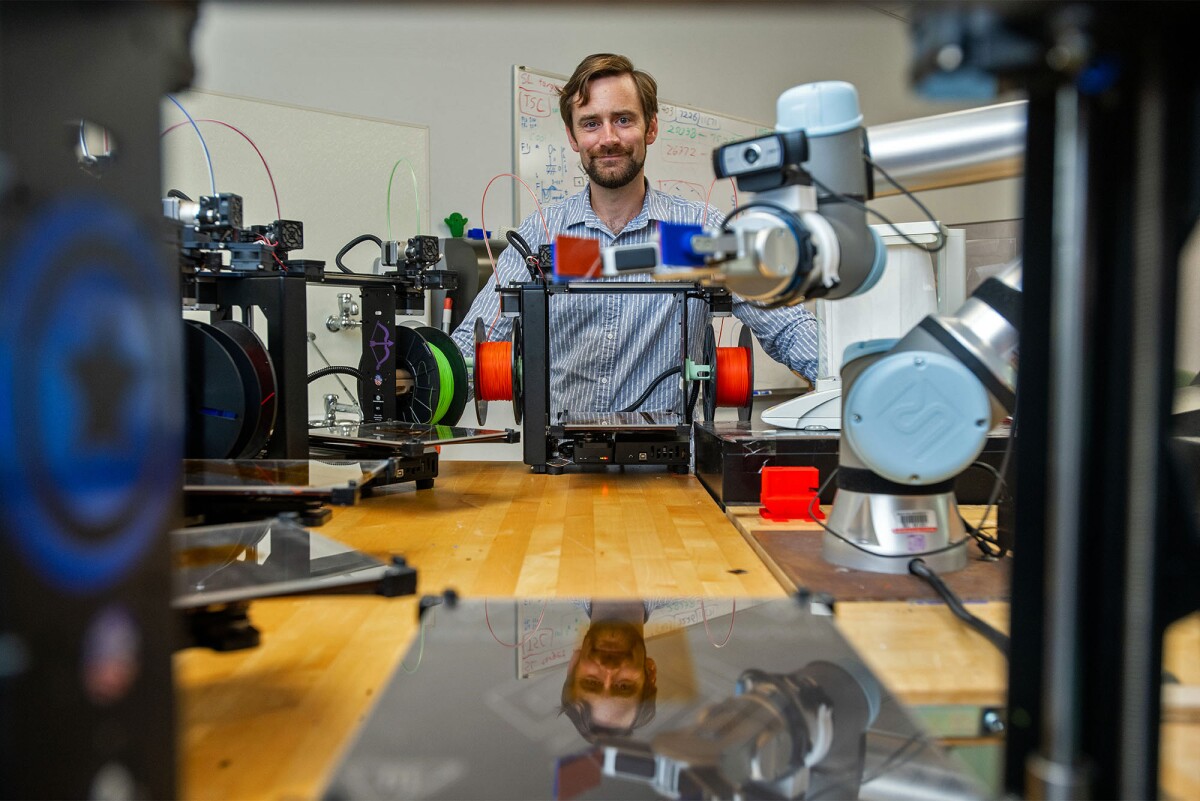Autonomous Robot Invents Top Shock Absorber

Boston University
Construct, weigh, compress, assess, discard, refine, repeat. Around the clock, tirelessly. Boston College’s autonomous AI robot MAMA BEAR has achieved a breakthrough after three years and 25,000 trials, discovering the most impact-resistant structure in the world.
MAMA BEAR, short for Mechanics of Additively Manufactured Architectures Bayesian Experimental Autonomous Researcher, utilizes 3D printing to create small structures. These structures undergo controlled crushing in a hydraulic press to measure their energy absorption.
Each iteration is meticulously cataloged in a database, noting design flaws and improvements.
This iterative process has been ongoing for three consecutive years, resulting in over 25,000 trials.
MAMA BEAR Sets New World Record in Energy Absorption Efficiency
Through its relentless efforts, MAMA BEAR has achieved a new world record efficiency of 75% energy absorption, surpassing the previous mark of 71%. The groundbreaking design resembles a twisted flower, surpassing what could have been independently imagined.
Keith Brown, an associate professor of mechanical engineering, and his KABlab team conceptualized the robot in 2018. By 2021, the team set up the laboratory, and MAMA BEAR initiated its quest for the perfect design.

Boston University
According to Boston University’s article, the robot subjects its creations to a pressure akin to that of an adult Arabian horse standing on a quarter. While this imagery is vivid, it prompted me to convert it into concrete figures: An adult Arabian horse typically weighs around 880 pounds (400 kilograms), and a US quarter measures about 0.955 inches (24 millimeters) in diameter. This translates to roughly 1,253 pounds per square inch (86 bar) of pressure. Squish. You’re welcome.
Developing the Most Efficient Mechanical Energy-Absorbing Structure
So, why all this effort? Boston College aims to develop the most efficient mechanical energy-absorbing structure for various potential applications. Both the National Science Foundation and the US Army are invested in this project.
The Army is utilizing the data to devise a new helmet padding design for soldiers in combat zones. Even a marginal 4% increase in energy absorption efficiency could significantly impact survival rates in such critical scenarios.

Boston University
Potential Applications of These Innovations
These innovations could potentially serve as the next-generation packing material, enhance vehicle bumper designs, and improve protective athletic equipment, among other applications.
The challenge lies in striking a balance between creating a shape and structure that is not too rigid to cause damage to what it safeguards, yet robust enough to absorb impacts effectively.
With over a trillion potential designs and various materials to explore, the pursuit of the most efficient structure is vast, and MAMA BEAR has only begun to explore its possibilities.
Boston University has experimented with materials such as TPE, TPU-1, 2, and 3, nylon, PETG, and PLA for its designs thus far. Anticipating further achievements from MAMA BEAR in its ongoing pursuit of perfection is exciting.
The team has published a comprehensive paper in Nature Communications, providing scientific data supporting their groundbreaking achievement.
Be sure to watch the video; it’s incredibly satisfying:
Read the original article on: New Atlas
Read more: Robotic Dexterity Enhanced by Finger-Shaped Senso










